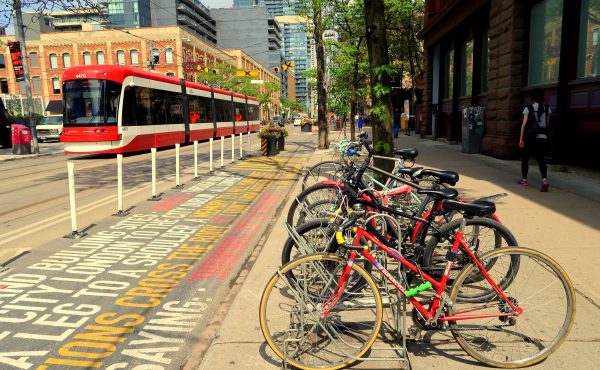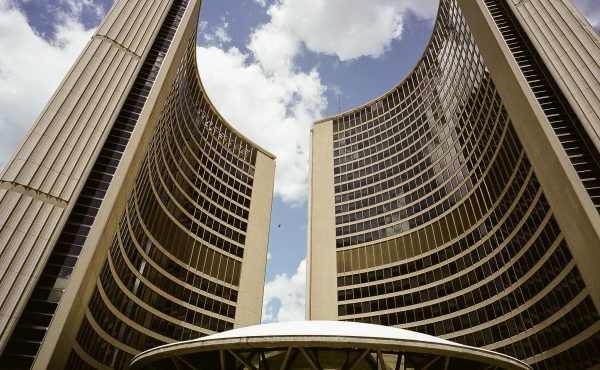As Canadian cities strive to navigate rapid urbanization, climate change, and digital disruption, “smart city” strategies have emerged as a popular, and tempting, framework for innovation and reform. Yet for all their promise, smart city efforts often stumble over vague goals, fragmented governance, and public mistrust.
Over the past three years, I’ve been working with an international group of researchers to better understand the allure of smart cities. In that time, we have had a chance to deeply study the approaches of six global cities — Barcelona, Calgary, Seoul, Singapore, Taipei, and Toronto — to smart city development. The findings provide a timely lens for reflecting on Toronto’s smart city progress and potential.
While the term “smart city” is used almost universally, its interpretation and execution vary widely. What unites most successful cases is not a particular technology or set of tools, but rather a coherent strategy, strong leadership, and a commitment to citizen-centric outcomes.
What do we actually want a smart city to do? Perhaps it’s best to reframe that question and ask, what can a smart city do for us?
The Elusiveness of a “Smart” Definition
One of the study’s key insights is that “smartness” is not a fixed trait but a contested, evolving idea. In cities like Singapore and Seoul, smart city efforts are closely tied to national digital agendas and long-term planning. Their governments have invested heavily in integrated digital infrastructure — from real-time transit systems to predictive analytics for public services. These efforts are supported by clear political mandates and centralized coordination, enabling coherence across agencies and programs.
By contrast, Toronto’s smart city journey has been more fragmented. The failed Sidewalk Labs project on the city’s waterfront was emblematic of the challenges that arise when private-sector innovation outpaces public-sector readiness. Despite early heightened expectations, the project collapsed under the weight of its governance gaps, privacy concerns, and the lack of clear public mandate. Since then, Toronto has adopted a more cautious approach to technology adoption, yet it still lacks a city-wide digital strategy comparable to those seen in Seoul or Singapore.
Governance: The Unsung Hero
Perhaps the most important, and often overlooked, factor in smart city success is governance. Our comparative study emphasizes that smart technologies do not automatically deliver better outcomes. Instead, what matters is how cities govern the use of technology: who makes decisions, who shares data and who ensures equity and accountability?
In Barcelona, for example, the city’s smart strategy is rooted in democratic control over data and digital infrastructure, with governance mechanisms that prioritize citizen rights, transparency and public ownership. Following a political shift in 2015, the city developed new models for open data, public procurement, and civic participation. Control over data and infrastructure reside in institutions, such as the Municipal Data Office, which oversees ethical data use, and in participatory processes, including Decidim, an open-source platform that allows residents to co-create policies and digital services. Rather than ceding control to tech firms, Barcelona created tools that allow citizens to shape how data is collected and used.
Toronto has taken tentative steps in this direction. The City’s Digital Infrastructure Strategic Framework, adopted in 2022, offers guiding principles for how technology should support equity, privacy, and inclusion. But the framework remains largely aspirational. Operationalizing it — through updated procurement policies, data governance standards, and interdepartmental coordination — will be crucial if Toronto is to build public trust and deliver on its smart city potential.
Civic Engagement: More Than Consultation
Another theme emerging from our study is the need to move beyond tokenistic consultation towards deeper forms of civic engagement. Taipei’s “vTaiwan” platform and Barcelona’s “Decidim” portal both offer models for digital democracy, enabling citizens to propose, deliberate, and vote on policy ideas in transparent ways. These platforms are not only symbolic; the votes are not universally binding but, these processes are institutionally embedded and political influential. In specific cases, like participatory budgeting, decisions can be binding within a defined scope. This provides an integration into city planning processes, giving residents real influence.
In Toronto, public engagement remains episodic and reactive. Efforts like the Civic Innovation Office have piloted user-centered approaches to service design, but these remain limited in scale and visibility. Embedding civic engagement into digital governance — by allocating staff, funding, and decision-making authority — could help Toronto avoid the common pitfall of designing for people rather than with them.
A Tale of Two Torontos?
Perhaps the most striking finding of our study is that while Toronto is rich in talent, resources, and civic ambition, it continues to punch below its weight on the international smart city stage. The city is home to globally respected researchers, tech entrepreneurs, and community leaders. It also benefits from provincial and federal programs that support digital innovation in the public sector. Yet coordination remains a chronic issue. Departments operate in silos, pilot projects lack pathways to scale, and meaningful partnerships with communities and the private sector are too rare.
The experience of Calgary — a city with fewer resources but clearer focus — is telling. Calgary’s smart city program is anchored in specific challenges, like climate resilience and economic diversification. For instance, the city launched the Climate Resilience Strategy and paired it with smart infrastructure projects, such as sensor-enabled stormwater systems to monitor flood risk. To support economic diversification, Calgary invested in Civic Innovation YYC, a program connecting startups with city challenges, and supported the development of a 5G innovation zone in partnership with post-secondary institutions. The city has developed a focused portfolio of initiatives, aligned with existing plans like the Downtown Strategy and Resilient Calgary, and grounded in measurable outcomes—such as emissions reductions, cost savings, and service efficiency. It shows that smart doesn’t have to mean sprawling or high-tech; it means being strategic, integrated, and driven by real urban needs.
Where Toronto Goes From Here
Our comparative work concludes with a clear message: smart cities are not defined by flashy apps or sensor grids, but by their ability to use technology to advance public values. Technology is not the centrepiece but a pathway to advance goals that other policy tools have failed to fully achieve. For Toronto, this conclusion means prioritizing governance reform, clarifying strategic goals, and investing in the people and processes that make innovation stick. It also means recognizing that digital transformation is not a substitute for urban planning, social equity, or democratic renewal—but a tool to advance them or, at the very least, compliment them.
As Toronto prepares its next budget and planning cycles, there is an opportunity to learn from its peers and put digital tools in service of a broader vision. Whether it’s improving housing access, upgrading transit, or addressing climate change, smart city thinking can help—if it is guided by purpose and accountability.
Toronto has all the ingredients to be a leader in this space. What it needs now is the recipe.
Zachary Spicer is an Associate Professor in the School of Public Policy and Administration at York University, where he also serves as Head of New College. He teaches and writes about municipal government, technology and innovation policy.




